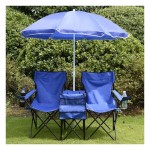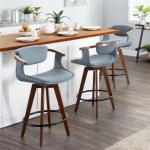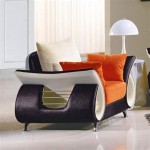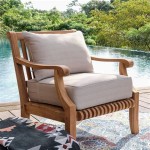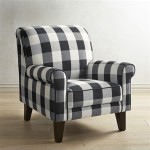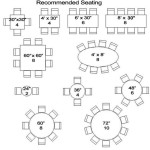Dining Chairs With Curved Backs: A Blend of Comfort and Style
Dining chairs are foundational pieces of furniture within any dining space, playing a critical role in both aesthetics and functionality. While seemingly simple, the design of a dining chair significantly impacts the overall dining experience. Among the diverse styles available, dining chairs with curved backs have gained considerable popularity due to their blend of visual appeal and ergonomic advantages. These chairs offer a softer, more organic form compared to traditionally straight-backed chairs, contributing to a more inviting and comfortable dining environment.
The appeal of curved-back dining chairs extends beyond mere aesthetics. The curvature is often designed to mimic the natural contours of the human spine, offering enhanced lumbar support and encouraging better posture during meals. This design consideration makes them a practical choice for individuals who spend extended periods seated or those with specific ergonomic needs. The variety of styles within this category allows for seamless integration with diverse interior design themes, from modern minimalist to classic traditional.
This article will explore the key aspects of dining chairs with curved backs, examining their design principles, ergonomic benefits, material options, and considerations for incorporating them into various dining room settings. The intention is to provide a comprehensive understanding of this chair type, enabling informed decisions when selecting furniture for the dining area.
Ergonomic Advantages and Design Considerations
The primary advantage of a curved-back dining chair lies in its potential for providing enhanced ergonomic support. Straight-backed chairs often force the spine into an unnatural, rigid position, which can lead to discomfort and fatigue, particularly during longer meals or gatherings. A curved back, designed appropriately, can alleviate this issue by conforming to the natural curvature of the spine, promoting a more relaxed and supported posture.
The effectiveness of the ergonomic design depends heavily on the degree and shape of the curve. A subtle, gradual curve is generally preferable to a sharp, pronounced bend, as the latter may concentrate pressure on a specific point of the back. The lumbar region, the lower part of the back, is particularly crucial to support. A well-designed curved back will provide gentle but firm support in this area, preventing slouching and reducing the strain on the lower back muscles.
Beyond the curvature itself, the height of the backrest is another critical consideration. A backrest that is too short will not provide adequate support, while one that is excessively tall may restrict movement and feel cumbersome. The ideal height will typically extend to the mid-back or upper back, depending on the individual's height and seated posture. The presence of armrests can further enhance comfort and support, allowing the upper body to relax and reducing strain on the shoulders and neck.
The material used for the backrest also plays a significant role in its ergonomic performance. A flexible material, such as woven rattan or a slightly resilient polymer, can conform to the individual's back shape more effectively than a rigid material like solid wood. Upholstery with adequate padding can further enhance comfort and provide additional support, especially for individuals with sensitive backs.
When selecting curved-back dining chairs for ergonomic considerations, it is advisable to test the chairs personally to assess their comfort and support. Factors such as the curvature, height, material, and presence of armrests should be carefully evaluated to ensure that the chairs meet individual needs and preferences.
Material Options and Aesthetic Versatility
Dining chairs with curved backs are available in a wide range of materials, each offering unique aesthetic qualities and durability characteristics. The choice of material will significantly impact the overall look and feel of the dining space and influence the longevity of the chairs.
Wood is a classic and versatile material choice for dining chairs. It provides a warm and natural aesthetic and can be easily shaped and finished to complement various design styles. Hardwoods like oak, maple, and walnut are particularly popular due to their durability and resistance to wear and tear. Softwoods like pine are often used in more rustic or informal settings. The curved back of a wooden chair can be crafted through various techniques, including steam bending, lamination, or carving. The finish applied to the wood can further enhance its aesthetic appeal and protect it from moisture and scratches. Options range from clear finishes that showcase the natural wood grain to painted finishes in a variety of colors.
Metal is another common material for curved-back dining chairs, offering a sleek and modern aesthetic. Steel and aluminum are frequently used due to their strength and lightweight properties. Metal chairs can be powder-coated or painted in a variety of colors to match the dining room decor. The curved back of a metal chair is typically formed through bending or welding. Metal chairs are often paired with upholstered seats for added comfort. Certain metal chairs are crafted from wire mesh, adding an industrial or minimalist touch to the dining space.
Plastic is a more contemporary material choice, offering affordability and versatility. Polypropylene and acrylic are commonly used for plastic dining chairs. These materials are available in a wide range of colors and can be molded into complex shapes, allowing for innovative and eye-catching designs. Plastic chairs are also relatively easy to clean and maintain, making them a practical choice for busy households. The curved back of a plastic chair can be seamlessly integrated into the overall design, creating a smooth and flowing silhouette.
Upholstery is an essential element in many curved-back dining chairs, adding comfort and visual interest. Fabrics like linen, cotton, velvet, and leather are commonly used for upholstery. The choice of fabric will influence the overall style of the chair and its level of comfort. Leather upholstery offers a luxurious and durable option, while linen and cotton provide a more casual and breathable alternative. Upholstery can be patterned or solid, allowing for further customization to match the dining room decor.
Rattan and wicker are natural materials that add a bohemian or coastal vibe to the dining space. These materials are lightweight and durable, making them a practical choice for dining chairs. The curved back of a rattan or wicker chair is typically woven into a decorative pattern, adding textural interest to the dining room. These chairs are often paired with upholstered cushions for added comfort.
The combination of different materials can create unique and visually appealing curved-back dining chairs. For instance, a wooden frame with a metal backrest or a metal frame with an upholstered back can add depth and complexity to the design. The choice of materials should be carefully considered to ensure that they complement each other and contribute to the overall aesthetic of the dining space.
Integrating Curved-Back Chairs into Various Dining Room Settings
Dining chairs with curved backs can be seamlessly integrated into a variety of dining room settings, from formal to casual and from modern to traditional. The key to successful integration lies in selecting chairs that complement the existing decor and furniture and that reflect the overall style of the space.
In a formal dining room, curved-back chairs upholstered in luxurious fabrics like velvet or leather can add a touch of elegance and sophistication. Dark wood finishes or metallic accents can further enhance the formality of the space. Consider pairing these chairs with a grand dining table made of mahogany or cherry wood and accessorizing with crystal chandeliers and fine china.
For a more casual dining room, curved-back chairs made of wood, rattan, or plastic can create a relaxed and inviting atmosphere. Lighter wood finishes or vibrant colors can add a touch of playfulness to the space. Pair these chairs with a simpler dining table made of reclaimed wood or painted wood and accessorize with woven rugs and colorful dishware.
In a modern dining room, curved-back chairs made of metal or plastic with clean lines and minimalist designs can create a sleek and contemporary look. Neutral colors or bold geometric patterns can further enhance the modernity of the space. Pair these chairs with a glass or metal dining table and accessorize with abstract art and minimalist lighting fixtures.
For a traditional dining room, curved-back chairs made of wood with intricate carvings and ornate details can evoke a sense of timeless elegance. Dark wood finishes and classic fabric patterns can further enhance the traditional aesthetic. Pair these chairs with a traditional dining table made of solid wood and accessorize with antique silverware and floral arrangements.
In a mid-century modern dining room, curved-back chairs with clean lines, tapered legs, and organic shapes can capture the essence of this iconic design movement. Wood and upholstery are commonly used in mid-century modern chairs. Pair these chairs with a dining table featuring hairpin legs or a boat-shaped tabletop and accessorize with vintage artwork and geometric patterns.
The size of the dining room should also be considered when selecting curved-back chairs. In a small dining room, smaller chairs with a low profile can help create a sense of spaciousness. In a larger dining room, larger chairs with a more substantial presence can help fill the space and create a more balanced look.
The color palette of the dining room should also influence the choice of chair colors. Chairs that complement the wall color, flooring, and other furniture can create a cohesive and harmonious look. Alternatively, chairs in a contrasting color can add a pop of visual interest and create a more dynamic space.
The addition of cushions or throw pillows can further enhance the comfort and style of curved-back dining chairs. These accessories can add a personal touch and tie together the different elements of the dining room decor.
Ultimately, the best way to integrate curved-back dining chairs into a dining room setting is to experiment and find what works best for the space and individual preferences. By considering the style of the room, the size of the room, the color palette, and the comfort level, it is possible to create a dining space that is both beautiful and functional with the use of dining chairs with curved backs.

Terra Solid Wood Curved Back Dining Chair Natural Threshold

Beige Curved Back Dining Chairs Set Of 2

Livingston Modern Classic Curved Back Light Grey Leather Dining Chair

Inclake Rounded Back Dining Chair Upholstered Accent With Curved And Wood Tapered Legs Modern Sofa Side Vanity For Living

Beara Brown And Black Dining Side Chair With Curved Back Set Of 2 Bm168072 The Home

Alexis Modern Upholstered Curved Dining Chair Set Of 2

Curved Back Leather Dining Chair West Elm

Karena Curved Back Upholstered Dining Chair Set Of 2 World Market

Oak Cherry Beech Solid Wood Curved Backrest Dining Chair

Leisuremod Modern Wooden Dining Chair Walnut Color Frame In Black

